
Zero Wing is a 1989 side-scrolling shooter arcade video game developed by Toaplan and originally published in Japan by Namco and in North America by Williams Electronics. Controlling the ZIG space fighter craft, players assume the role of protagonist Trent in a last-ditch effort to overthrow the alien cyborg CATS. It was the eighth shoot 'em up game from Toaplan, and their fourteenth video game overall.

Doom 64 is a first-person shooter game by Midway. It was first released for the Nintendo 64 in 1997, as the second spin-off game in the Doom series after Final Doom (1996), and the fourth game in the series overall. A remastered port was developed by Nightdive Studios and published by Bethesda Softworks for Nintendo Switch, PlayStation 4, Windows, and Xbox One in March 2020, and for Stadia in May 2020.
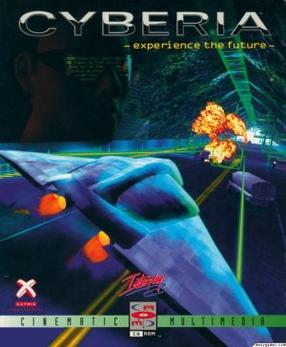
Cyberia is a science fiction action adventure video game released for MS-DOS in January 1994, and released two years later on the PlayStation, Sega Saturn, 3DO and FM Towns consoles. A sequel, Cyberia 2: Resurrection, was released in 1995 for both DOS and Windows 9x formats.
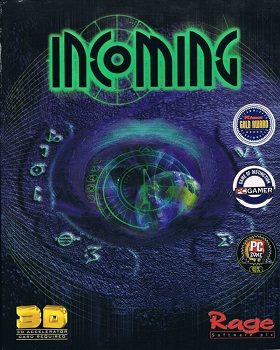
Incoming is a 3D shooter video game developed and published by Rage Software. The game was first released for Microsoft Windows in mid-1998, and was followed by a Dreamcast version, which was released in Japan on December 17, 1998, in Europe on October 14, 1999, and in North America on September 15, 1999. Set in the near-future of 2009, the game primarily revolves around controlling vehicles and turrets to fight alien invaders of Earth in one of the campaign modes, the arcade mode, and with or against another player. Some levels include brief real-time strategy segments.

Jungle Strike is a video game developed and published by Electronic Arts in 1993 for the Sega Genesis/Mega Drive. The game was later released on several other consoles such as the Super Nintendo Entertainment System (SNES), and an upgraded version was made for DOS computers. The Amiga conversion was the responsibility of Ocean Software while the SNES and PC DOS versions were that of Gremlin Interactive, and the portable console versions were of Black Pearl Software. It is the direct sequel to Desert Strike and is the second installment in the Strike series. The game is a helicopter-based shoot 'em up, mixing action and strategy. The plot concerns two villains intent on destroying Washington, D.C. The player must use the helicopter and occasionally other vehicles to thwart their plans.

Cannon Fodder 2: Once More unto the Breach, or simply Cannon Fodder 2, is an action-strategy shoot 'em up game developed by Sensible Software and published by Virgin Interactive for the Amiga and DOS in November 1994. The game is the sequel to Cannon Fodder, a successful game released for multiple formats in 1993. The game is a combination of action and strategy involving a small number of soldiers battling through a time-travel scenario. The protagonists are heavily outnumbered and easily killed. The player must rely on strategy and heavy secondary weapons to overcome enemies, their vehicles and installations.

Shadowgrounds is a top-down shooter for Microsoft Windows, Linux and Mac OS X, developed by Frozenbyte. The game takes place on a space colony on Ganymede which is being attacked by aliens. It was released for Windows on November 11, 2005, in stores in Finland and Germany, and in Spring 2006 in the rest of Europe and North America.

MegaRace is a racing video game developed by Cryo. It features pre-rendered 3-D graphics and over twenty minutes of full-motion video of fictional game show host Lance Boyle. It was released for DOS in 1993. It was then released for the Sega CD and the 3DO the following year. It spawned two sequels, MegaRace 2 and MegaRace 3.

Alien Breed 3D II: The Killing Grounds is a first-person shooter game developed by Team17 for Amiga. Published by Ocean Software in 1996, it is the fifth game in the Alien Breed franchise, a series of science fiction-themed shooters.
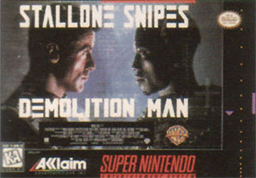
Demolition Man is a pair of action video games based on the film of the same name. Acclaim Entertainment published the 16-bit version, which features run and gun gameplay, for the Super NES, Sega Genesis and Sega CD. Virgin Interactive released a completely different game for the 3DO that combined several distinct gameplay styles. In both games, the player controls John Spartan, the main character from the film, as he attempts to find and defeat his nemesis, Simon Phoenix.
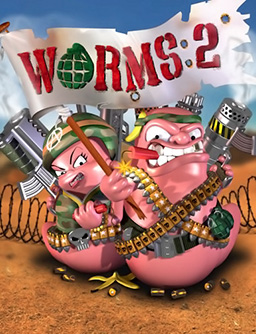
Worms 2 is a 1997 artillery tactical game developed and published by Team17 and released for Windows. It is part of the Worms series and a sequel to the 1995 game Worms. As with the first game, players control their team of worms in combat against each other, using a wide collection of rockets, grenades, firearms, explosives, and air strikes, some eclectic and others bizarre. Also as with the first game, the objective is to eliminate all opposing worms and become the sole surviving team.
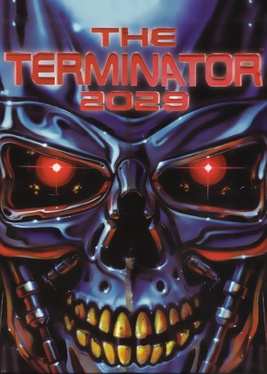
The Terminator 2029 is a first-person shooter video game developed and published by Bethesda Softworks. It is based on the Terminator film series, and was released in 1992 for DOS. It is Bethesda's second Terminator game following The Terminator (1991).

Bomberman, also known as Dyna Blaster in Europe, is an action-maze video game originally developed and published by Hudson Soft for the PC Engine in Japan on 7 December 1990 and later in North America for the TurboGrafx-16 by NEC in 1991. Belonging to the Bomberman franchise, it is a re-imagining of the first game in the series starring White Bomberman on a quest to rescue Lisa, the kidnapped daughter of his inventor Dr. Mitsumori, from the castle of Black Bomberman while defeating evil monsters and villains that work for him. The game was later ported to home computers, each one featuring changes compared to the original version. Conversions for other platforms were in development but never released. The title garnered positive reception from critics since its initial release on the PC Engine/TurboGrafx-16 and later on home computers.

Shadowgrounds: Survivor is a top-down shooter game developed by Frozenbyte as the sequel to Shadowgrounds. It features three new playable characters, a new "Survival" mode, graphics enhanced from its predecessor, and an integrated physics engine.

A first-person shooter (FPS) is a video game centered on gun fighting and other weapon-based combat seen from a first-person perspective, with the player experiencing the action directly through the eyes of the main character. This genre shares multiple common traits with other shooter games, and in turn falls under the action games category. Since the genre's inception, advanced 3D and pseudo-3D graphics have proven fundamental to allow a reasonable level of immersion in the game world, and this type of game helped pushing technology progressively further, challenging hardware developers worldwide to introduce numerous innovations in the field of graphics processing units. Multiplayer gaming has been an integral part of the experience, and became even more prominent with the diffusion of internet connectivity in recent years.

Attack of the Mutant Penguins is a action-strategy video game developed by Sunrise Games and published by Atari Corporation for the Atari Jaguar in Europe on December 1995, and North America on March 15, 1996. A port titled Mutant Penguins was released in 1996 by GameTek for MS-DOS. The plot follows Bernard and Rodney, intergalactic heroes defending earth against alien invaders disguised as penguins. The player must dispatch the alien penguins before they reach a doomsday weapon, in the form of a weighing scale. Earth also has real penguins, who help the player by fighting the aliens and counteracting their weight on the scale.
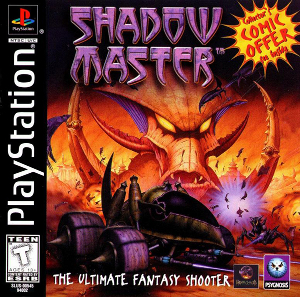
Shadow Master is a video game developed by HammerHead and published by Psygnosis for the PlayStation and Microsoft Windows. It is a first-person shooter in which the player character rides in an armed vehicle. It met with predominantly negative reviews which praised its visuals but criticized it for clunky controls and poorly designed, frustrating gameplay.

P-47: The Phantom Fighter is a 1988 horizontally scrolling shooter arcade video game originally developed by NMK and published by Jaleco. Set during World War II, players control a Republic P-47 Thunderbolt fighter aircraft to face against the Nazis, who are occupying multiple countries around the world. Its gameplay involves destroying waves of enemies, picking up power-ups and new weapons, and destroying bosses. It ran on the Mega System 1 hardware.

Final Blaster is a 1990 vertically scrolling shooter developed by Nova and published by Namco for the PC-Engine. Controlling the Blaster Mark II "Phoenix" starfighter, the player is tasked with wiping out the Bosconian alien race before they destroy Earth. Gameplay involves shooting down enemies and avoiding projectiles — power-ups can be collected to increase the player's abilities. It is the third and final game in Namco's Bosconian series.

Rayxanber II is a 1991 horizontally scrolling shooter video game developed and published by Data West for the PC Engine CD-ROM². It is the sequel to Rayxanber, which was released earlier in 1990 for the FM Towns. In the game, the player assumes the role of a fighter pilot controlling the Eliminate Scanner AD space craft to protect Earth against an alien invasion led by the returning Zoul Empire. The title was created by Team 50, a group within Data West that previously worked on the first entry for FM Towns. The music was scored by Yasuhito Saito, who composed for the original entry and also worked on titles such as Layla and The 4th Unit series.




















